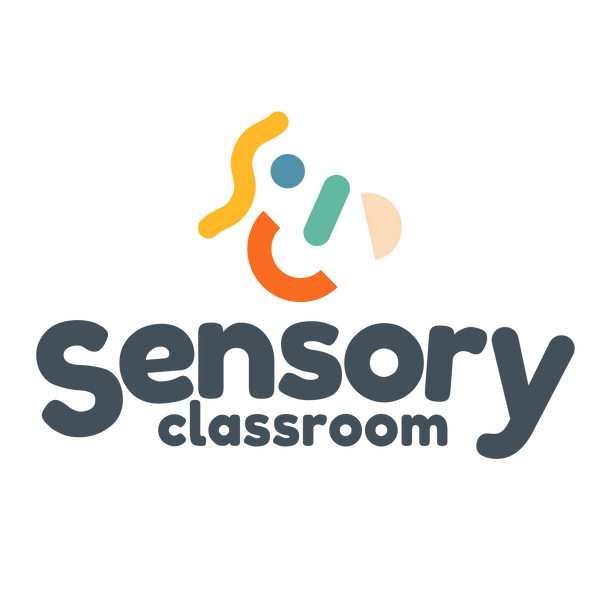Designing an autism resource base from scratch is one of those rare moments in education where we get to pause and ask: what does this learner group really need to thrive? Not what fits the “school norm”. Not what looks good for an Ofsted visit. But what actually works — for regulation, communication, and connection.
This post pulls together everything I’ve learned from designing and advising on resource base classrooms over the years — including layout tips, mindset shifts, and the resources I use to create calm, structured, neuro-affirming spaces.
Start with structure every time.
Whether your learners are speaking, non-speaking, dysregulated, sensory-seeking, or more beautiful diversity— every autism classroom thrives on clear structure.
This doesn’t mean “high control”. It means predictable environments where learners know what’s coming, how to transition, and how to finish something.
For that, I always come back to TEACCH. It’s still the most useful framework for building independence.
🔗Classroom Setup Resource Pack
This includes:
- Printable visual schedules for individual learners
- Countdown strips with “check schedule” symbols to ease transitions
- Matching boards for supporting transitions into new areas or activities
- includes Widgit symbols or Boardmaker symbols or Symbolstix, select this at checkout.
It’s a really simple way to reduce anxiety and promote independent movement around the room or whole school— without relying on adult-led instruction every time.
and I use transition songs in my room to support moving from area to area or activity to activity: Transition Songs Album
Build a communication rich environment.
Your classroom should presume every learner has something to say. If you’ve got AAC users, pre-verbal learners, or gestalt processors — your room needs to offer access to communication at all times, not just in “work time”. It isn’t just about when they want to communicate something, but is useful for helping understanding also.
To do that, I recommend:
- Lanyard symbols for quick communication on the move
🔗 Lanyard Symbols - Core word boards and simple choice boards for autonomy
🔗 Core Word of the Week Programme - Sign up to Widgit, Boardmaker, Symbolstix or equivalent for robust and universal symbols.
These aren’t just “nice to haves” — they are essential for avoiding frustration, refusals, and shutdowns when learners don’t feel understood.
Prioritise sensory regulation
This is where most classroom designs fall short. Learners don’t need a big flashy “sensory room” — they need embedded access to regulation throughout their day.
Use simple things like:
- A 3-step sensory circuit for arrival
🔗 Sensory Circuit Pack - Weighted toys, chewies, and peanut balls
🔗 Amazon Storefront Essentials - Assess your learner's sensory regulation needs to make a bespoke sensory diet and work tasks that meet their needs.
Think about the pyramid of learning — sensory and physical needs must be met before we can even think about academic focus.

Get clear on your mindset.
Your resource base should be built on:
- Assumed competence (we presume understanding even when communication isn’t evident)
- Person-appropriate choices (see blog)
- Playful connection over forced compliance
If the staff culture in your school is still driven by mainstream standards and tick-box progress, you might find some resistance. That’s why mindset work is key.
🔗 Classroom Blog: https://sensoryclassroom.org/blogs/sensoryclassroom
🔗 Sensory Curriculum: https://sensoryclassroom.org/products/sensory-curriculum
🔗 Storage Drive of printables (& so much more!) https://sensoryclassroom.org/products/full-google-drive
These are perfect for challenging assumptions and opening up bigger conversations about what SEND success really looks like.
Keep it calm, but not clinical
One of the most overlooked elements in a sensory-friendly space is the visual environment — especially the walls. It’s tempting to go overboard with posters, bright displays, or interactive boards, but too much visual input can lead to overwhelm or dysregulation for many autistic learners.
That doesn’t mean the room should feel empty or clinical. In fact, I’ve seen classrooms that feel more like holding spaces than learning environments because they’ve stripped everything back too far. The key is balance.
Use neutral hessian or fabric backing on display boards to soften the space, and keep what you add relevant and purposeful. I recommend Velcroing up only what’s useful — like visual timetables, choice boards, or learner-created work that genuinely celebrates their voice. It gives a sense of ownership and joy, without cluttering the sensory space. Just enough to create a warm, welcoming environment — without tipping into chaos.
Want to learn more?
My podcast is a great place to start!
🎙️ Podcast Episode 7 – I answer all your questions about classroom setup, environment zoning, and why sometimes less is more when it comes to displays and clutter.
📺 Watch: https://youtu.be/TqeXJdCRjLM
🔗 Listen: https://sensoryclassroom.org/pages/podcast
Final thought
A well-designed autism resource base doesn’t mean new furniture and fancy boards. It means listening — to your learners, your staff, and what regulation and autonomy actually look like.
If you’d like tailored support to help you get started or review what you’ve already planned, I also offer a Virtual Consultancy option where we can walk through it together.
You don’t need to do everything at once — you just need to do the right things first.

